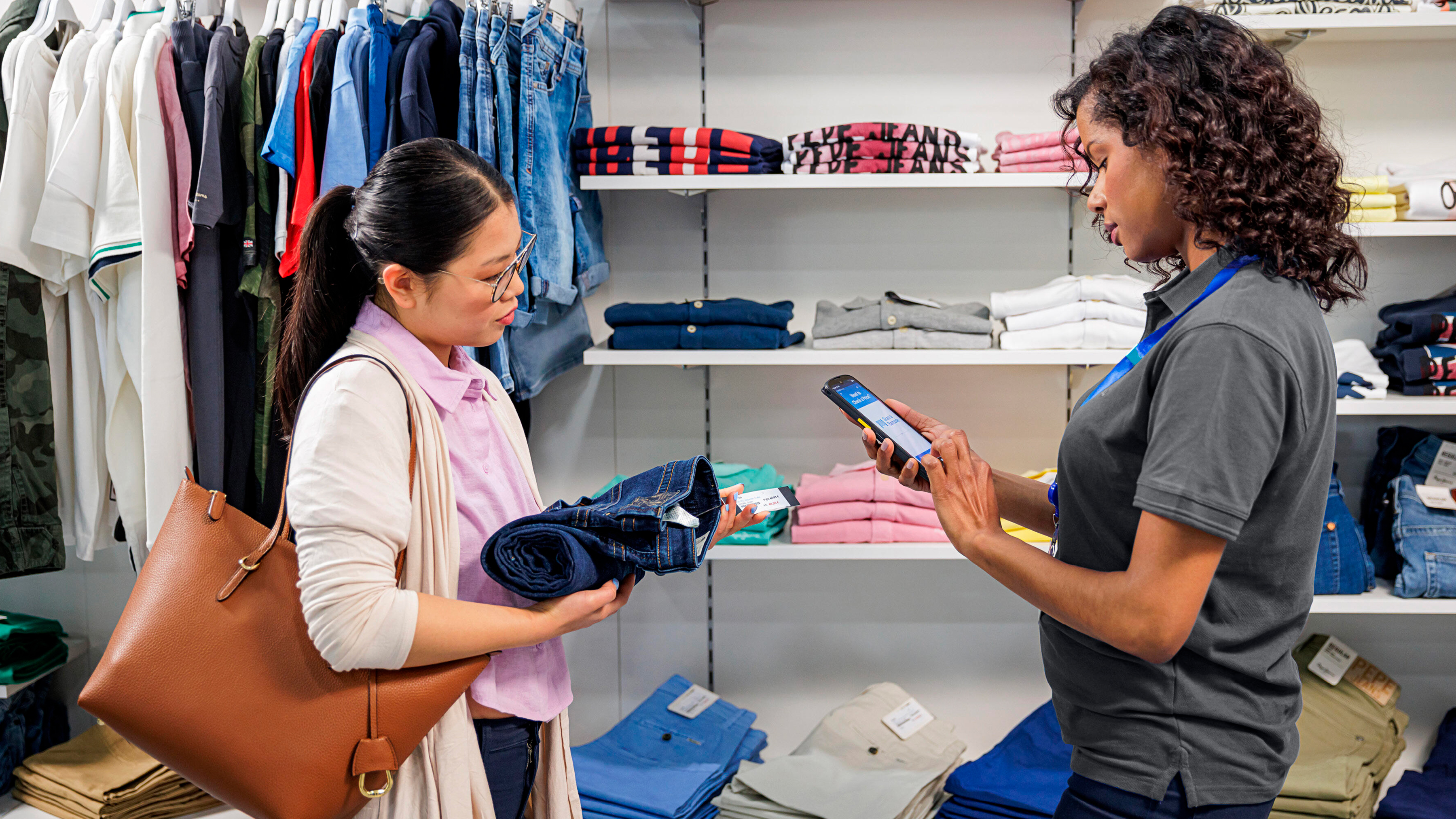
Hats Off to the Humble Patient Wristband
I didn’t quite appreciate how much this technology helped me as a mum and patient until I saw how much it is doing to protect me and my family firsthand, starting at its place of birth.
Carefully stowed away in a box of memories are the wristbands my babies wore at birth – each of tremendous sentimental value representing the arrival of the most precious of gifts. Now sprawling teenagers and pre-teens – my youngest a large rugby loving eight-year-old – it seems a lifetime ago they were tiny babies, taking in the newness of the world. The teeny barcoded white wristbands with matching mummy versions, a touching reminder of a time filled with late night feeds, baby classes, tea and cake with new mums – a time when life slowed down as I fixated on my bouncing babies, and them on me.
My collection of small baby wristbands trigger nostalgia and love, but I know their primary purpose is not to be a family keepsake. They are there to help keep patients of every age safe. Like the many millions of wristbands printed in healthcare organisations every day all over the world, they are there to act as a means of identification that can link a patient digitally to their medications, procedures, preferences, sensitivities, and medical history. These wristbands are the key to reducing the risks of misidentification that have led to babies going home with the wrong parents, errors in drug dispensing, or even incorrect operations being carried out.
So, just a few weeks ago, I trekked to the source of these life-protecting wristbands to seek enlightenment.
I went to Zebra Technologies’ supplies manufacturing facility in Preston in the North of England to find out all I could about what makes a good wristband and how they differ based on the different needs of patients. And while I was there, I wanted to understand all I could about the world of healthcare labelling more broadly. From RFID through temperature sensors to linerless labels, I’ve been told this all helps healthcare workers be more efficient and better meet the needs of patients. But how?
That was the question I sought out to answer, for you and me.
As I turned into the parking lot, I was met with a sizable, corrugated iron warehouse facility with multiple lorries sidled up to loading bays set to deliver Zebra-produced supplies all over EMEA. The building is Zebra branded – black with white stripes and a big Zebra logo in the centre. A large compressor sits outside with metal pipes feeding into the building sucking out surplus cuts of labels. I am met by members of the friendly Zebra team and taken through smartly decorated offices with Zebra pictures, Zebra teddies and all types of Zebra themed paraphernalia at every turn.
Once settled in a comfy meeting room, the supplies sheep dip begins in earnest! On my table, a pack of supplies samples. The tiny wristbands for babies immediately drew my attention. As the adviser talks through the journey of Zebra healthcare wristbands from this very facility to hospitals and then patients’ keepsake boxes (like mine), I learned of the need to offset three different attributes that healthcare providers deem table stakes these days: durability, comfort and printability.
Though all perfectly reasonable requirements, they surprisingly pull our engineers in different directions as they aim to consistently deliver these qualities.
Durability is important, but this generally means the material used for the wristbands must be more rigid and expensive. So, the most popular wristbands have been made to be ‘just durable enough’ (i.e. built to last a typical hospital stay of 3-5 days).
However, some patients, like a competitor I met at the Ironman World Championships who was in hospital for six months after a near fatal car crash, need something tougher. As do the dementia patients and fall recoverees I meet volunteering at my local hospital. These people need wristbands that can survive multiple showers, day-to-day friction, constant disinfecting, and an onslaught of perfumes and cosmetics. These are wristbands that are more expensive individually but cost less over time. Because they typically last two weeks, you don’t need as many.
When it comes to the material rigidity…
Most wristbands I touched feel soft to me. But my skin is resilient. That’s not usually so when it comes to the very young or the very elderly, or even people with sensitive skin. Premature babies’ newly formed skin is extremely sensitive. The patients I meet in their late nineties while volunteering have almost translucent skin. Then there are people of all ages with allergies and intolerances. (Anything that rubs you repeatedly could become an irritant.) In these situations, it is important for us to make (and you to buy) wristbands that will not harm the patients’ delicate external surfaces, even if this comes at a slightly higher cost.
What can cause irritation?
Rigidity. Excess adhesive. Sharp edges. Varnish.
The latter particularly caught my attention, as it isn’t something I tend to associate with wristbands. However, varnish adds an extra level of durability to wristbands, as does carefully selected glue. Varnish also holds antibacterial prowess. But it, along with glues, must be made from chemicals that do not cause an allergic response. (For example, they must be latex free.) Plus, they can’t contain metals as those can impact MRI scanning as well as other radiography. It really is a balancing act between durability, comfort, and even safety.
Wristbands I learned, are predominantly generated using direct thermal printers. This means heat is applied to the label which generates the printed letters and patterns directly to the material. It’s kind of like a receipt that you can mark by scratching with a finger. My mind heads to the three-layered white, pink and yellow credit card receipts from days of old.
There is an alternative way to print wristbands – thermal transfer – but it requires a ribbon to print, which is thrown away. Plus, the ribbon retains an inverse of what is printed on the label, which is not good when data security is critical. Imagine a person of villainous intent hunting through hospital bins to grab a ribbon with every patient who'd been present in a ward that day. They can make a guess at very personal health conditions and use them for exploitation. Naturally, direct thermal printing makes more sense.
Something else that makes a lot of sense: the ability to batch print wristbands in an exceptionally ‘individual’ way.
While most patients only need one wristband at a time, it doesn’t always make sense to have to feed a printer with one wristband at a time – such as when you’re trying to pair mum with child. So, my tour guide at the manufacturing facility showed me a range of wristbands that are available on A4 pages. These are designed to go through a laser printer – one that you'd print letters and documents from. It’s a clever push out template that lets clinicians print on a paper area, then the band folds in on itself with transparent plastics and a cute teddy bear design. There are two adult wristbands and two infant bands per page – one per wrist per patient. This is so mum and baby are linked together. No dreadful situations of babies being switched at birth.
At this point in my factory experience, my mind was really being opened to the world of wristbands!!
Then I was introduced to a 'Comfy Cuff': a foam under band that is attached to the patient first with the wristband then attached around it. This is for when comfort is even more important, such as the most sensitive of skins. Or it may be used under RFID wristbands to help with signals. This is something that I found really interesting and important, especially given that RFID locating is becoming the new standard in healthcare.
The big wet vessel that is the human body is not good for relaying radio waves designed to activate the antennas inside RFID tagged wristbands. Add some air – via a foam wristband – and the read success rate increases. Using RFID to locate patients who are frequently moved around hospitals during diagnostics, treatment, and recovery is a helpful way to protect the most vulnerable from being ‘missed’, becoming lost, or staying parked too long in one place during transit between wards. Again, think about dementia patients. They may inadvertently get lost in hospitals, say from an unsuspecting visitor opening a door to them. RFID readers based around the hospital – like at Hull University Teaching Hospital – could pick up their location and a kindly nurse be sent to guide them back to their intended location.
As RFID wristbands advance from near range - think about a close-up alternative to barcode scanning – to medium range via dispersed readers and then to long-range ceiling-mounted readers silently monitoring movement, it will become easier to locate both people and assets without having to channel Sherlock Holmes every time. What will really help remove any mystery around patient locations is the latest development in wristband technology that just happened to be the brainchild of a Zebra dazzle: an RFID antenna that covers the whole wristband and can help hospital staff locate patients that are quite a long distance away from where they should be. There’s no need to turn the wristband ‘on’ for an effective read, either. Any number of RFID readers installed throughout the hospital can ping the RFID-enabled wristband and point staff and family members to the patient’s current location. Crisis (and panic) averted. I think this is especially helpful when the patient (i.e., babies) can’t speak or can’t carry a cell phone with them (which might otherwise be used to pinpoint a location).
At this point, a quick review of the wider healthcare supplies catalogue followed, and enhancing patient safety was the clear purpose for each of these modern technology tools:
- Labels that change colour when they fall out of the acceptable temperature range – great for confirming samples have not experienced temperatures that can cause denaturation or that medication has stayed in the defined ‘safe zone’ while transported, stored, or prepped for administration.
- Electronic temperature sensors that add even more sophistication to temperature sensing capabilities by relaying information to those who aren’t looking at the medications, vaccines, blood products or temperature-sensitive items ‘right now’ but are responsible for monitoring and maintaining their viability 24/7.
- Labels that can withstand cryogenic freezing! Think stem cells harvested at birth for use decades in the future. Those fit for all the chemicals and processes in labs as well. Blood bag labels, petri dish labels, urine sample labels. Soft labels, hard tags.
The list and use cases seem endless.
It’s not every day that you get a front-row seat to the frontlines of manufacturing, so I was grateful to see where and how Zebra wristbands are made. I was really quite blown away by the complexity of making a wristband.
There were long lines of printing presses operating in a hive of activity with multiple processes along multiple manufacturing lines. Layers were adhered together, with several processes required to print on the label – each illuminating where to cut and apply watermarks. There was die cutting, the application of adhesive and strips that enable the tamper proof seal. Where applicable, the RFID antenna was installed, with people reeling, putting into cassettes, adding microchips. There was a line filled with six ink stations, and I learned wristbands can be created in every colour. Red is important in hospitals as this means 'issue' – a clear visual prompt for staff to carefully review the patient's medical record. This helps ensure there is no over complication what that issue is. Perhaps it’s an allergy or a contraindication. Nonetheless, it’s a life-protecting ‘alert’ that’s difficult to miss.
While on this frontline experience, I was advised how Zebra is marching toward ever more sustainable practices. First with its ZeroLiner linerless label offerings that eliminate the label backing we are so accustomed to peeling off and tossing when applying labels. This helps eliminate huge volumes of waste when considering the use of wristbands and other identification labels at scale. (Think big shipping companies.) But from a wristband perspective the next big jump toward sustainability looks to be through the cartridge that holds the wristbands in the Zebra printer. It has traditionally been thrown away but will soon be made from recyclable ocean-bound plastics collected before they ever have a chance to reach the sea. These can be recycled too!! So, reduced landfill contributions thanks to re-used sea rubbish that’s then able to be recycled. A treble whammy of sustainability.
As I thanked the Zebra team for sharing so much information and headed back towards home, I had time to reflect. The simple wristband I hold cherished in my memory box will never be viewed in the same way. What a complex product! So many balancing forces determining what it is made from, how it must be made, and why you can’t just give patients ‘any wristband’.
The wristbands that will go on patients today have been built on learnings from millions of people over decades. User experience has guided continuous innovation around a ‘label’ that many probably see as simple and disposable. Though generated through a sophisticated multifaceted manufacturing process, the final product is humble and barely noticed. Yet, it’s responsible for keeping millions of patients all over the world safer every second of every day.
Patient wristbands rock. (I bet you’ll never look at them the same again.)

Lorna Hopkin
Lorna Hopkin is Product Marketing Advisor at Zebra Technologies with responsibility for Zebra healthcare solutions and advanced location technologies. Lorna joined Zebra in August 2018 as part of its acquisition of rugged tablet specialist Xplore Technologies.
Lorna is a chartered marketer and has two and half decades’ experience across a wide range of industries. At Zebra, she has launched a variety of products into the healthcare space and other verticals.
Lorna is a tireless advocate for health and fitness at Zebra and in her spare time participates in Ironman competitions and enjoys writing about her experiences at https://theordinaryironman.com/






